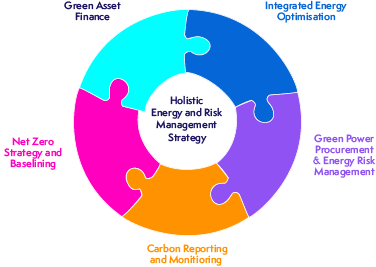News
better business decisions
Posted 2 years ago | 7 minute read

PPAs more viable under Ontario GA proposal
Ontario recently issued a proposal to amend the Global Adjustment regulations to allow Class A participants under the Industrial Conservation Initiative to enter into power purchase agreements (PPAs) with certain types of renewable electricity generation facilities to offset consumption during the five system peak hours.
What is Global Adjustment?
When it comes to the price of electricity in Ontario, large energy users face two components: the Hourly Ontario Energy Price (HOEP) and Global Adjustment (GA).
The Global Adjustment is used to fill the gap between the price as determined in the wholesale market (HOEP) and the price necessary to cover contracted generation. If GA goes up, then HOEP goes down and vice versa. The wholesale price of electricity changes hourly based on its demand and the availability of supply.
All energy users in Ontario pay a Global Adjustment fee. It covers the cost of:
- building new electricity infrastructure
- maintaining existing resources
- providing conservation and demand management programs
GA fees can add up to 40%-60% of a business’ electricity bill. To encourage large electricity users to shift their consumption the government introduced the Industrial Conservation Initiative (ICI).
What is the Industrial Conservation Initiative?
The Industrial Conservation Initiative (ICI) is a government program introduced by the IESO to reduce the costs of managing Ontario’s electricity infrastructure. In exchange for reducing electricity usage during the top five peak hours each year.
Larger businesses who are eligible to participate in the ICI program are categorized as ‘Class A’ and their monthly Global Adjustment charges are based on their electricity demand during the top five hours of system peak from the previous base period (May 1 to April 30).
Class A customers are:
- those with an average monthly peak demand of 5 MW or higher
- businesses with an average monthly peak demand between 1 MW and 5 MW, but these customers need to opt-in to participate
- manufacturing facilities and certain agricultural businesses with an average monthly peak demand of 500 kW or higher are also eligible, and need to opt-in to participate
Under the ICI program, GA charges are measured by energy use during coincident peaks. Coincident peaks are the five hours of the year when the demand for electricity in Ontario is at its highest. The charges are calculated by looking at a business’ share of the total energy use (i.e. 1% of total use means you pay 1% of total GA costs).
What are the benefits of the ICI?
The ICI program aims to reduce pressures on the province’s electricity system by empowering large electricity consumers to lower their electricity demand during peak periods to reduce electricity bills. ICI has the added benefit of deferring the need to build new peaking generation facilities in the longer term.
Cost impact across sectors and industries varies. But five hours of peak demand per year represents up to 60% of a Class A electricity bill, this means large volume consumers have an opportunity to reduce their GA costs.
As more and more users begin to participate in the ICI program, it is becoming more difficult to predict and curtail during the top five peak hours each year. Most coincident peaks take place in the summer, when energy use is at its highest. The better that an ICI participant can forecast the top five hours of peak demand and shift their electricity usage accordingly, the more they will be able to benefit from the ICI program.
Under the current ICI program, commercial account holders with an average monthly demand of at least 1MW and manufacturers with an average monthly demand of at least 500kW are categorized as Class A consumers. The factor used to determine their share of total GA costs is based on their energy usage during the five hours of highest system-wide demand in the 12 months from May 1 to April 30. Class B consumers, including all commercial account holders with an average monthly demand less than 1MW, collectively cover the remaining GA costs after the Class A allotment is subtracted. Their apportionment is based on a per kilowatt-hour basis.
New opportunities
Although virtual PPAs are already permitted in Ontario, they have been few and far between due to the inability to hedge against GA charges which has comprised the majority of electricity commodity costs in recent years.
Under the proposal, which was tabled on November 2, participants in the ICI program would be able to use clean energy power purchase agreements (PPAs) to offset their electricity consumption during the five hours of annual highest system-wide demand. This means that, if approved, large electricity consumers could have a option to decrease the peak demand costs that dictate their portion of the overall electricity system expenses under the GA program.
Specifically, Class A participants could enter into private supply agreements for qualifying renewable electricity generation and, in turn, reduce the amount of electricity withdrawn from the IESO-controlled grid during the five highest demand peak hours (for as early as the May 1, 2024 to April 30, 2025 base period) upon which Class A participants are assessed their respective GA charges (for the following adjustment period commencing July 1, 2025). Eligible renewable energy generation is currently proposed to include wind, solar, small hydroelectric (i.e., less than 10 megawatts), biofuel and battery storage.
By using contracted electricity from qualifying clean energy producers, participants would treat this supply as if it were on-site generation for the purpose of calculating GA costs, effectively creating a regulatory framework for the implementation of virtual net metering.
The proposal is intended to increase development of new clean electricity generation as well as enhance industrial competitiveness. The proposal does not state whether it will include, or be accompanied by, a contemporaneous regulatory framework to offset the increase in GA charges that Class B customers will be required to pay if the proposal is approved.
Comments on the proposal are due by December 17. The Ministry will review responses before finalizing the regulation, which is proposed to come into effect on May 1, 2024. This would align with the commencement of the new base period, determining peak demand factors for Class A consumers for the subsequent 12 months from July 1, 2025 to June 30, 2026.
The proposal, if approved, could result in an uptick in corporate PPAs and, in addition to the recently implemented clean energy credit registry, help businesses in Ontario to achieve their environmental, social and governance goals.
When it comes to reaching net zero there are a variety of paths that businesses can take. But each comes with its own challenges and impacts on both operations and budgets. GridBeyond provides a cutting-edge suite of products and services, designed to transform the way you purchase, use and manage your energy.
Wherever you are on your net zero journey towards, we can support your business get there!
Built on top of our metering solution, GridBeyond‘s net zero solutions allow users to track their real-time metrics and progress towards corporate ESG goals and evaluate and fund further steps to help you reach your targets.
Our solutions combine machine learning, AI and data solvers with an experienced trading team to deliver carbon and cost savings, while simultaneously addressing the commercial and operational aspects of your asset portfolio through clean power purchasing, energy risk management and asset finance, installation and operation.







